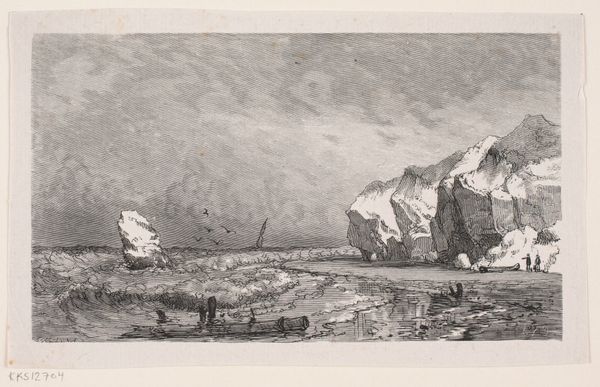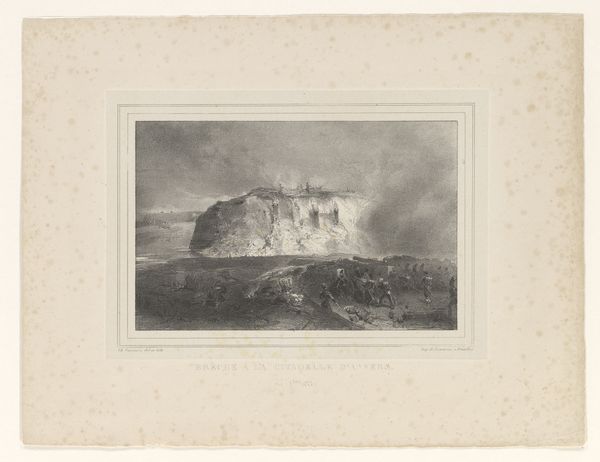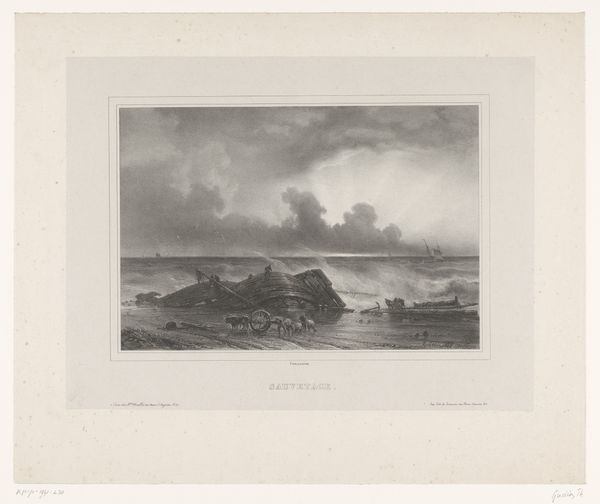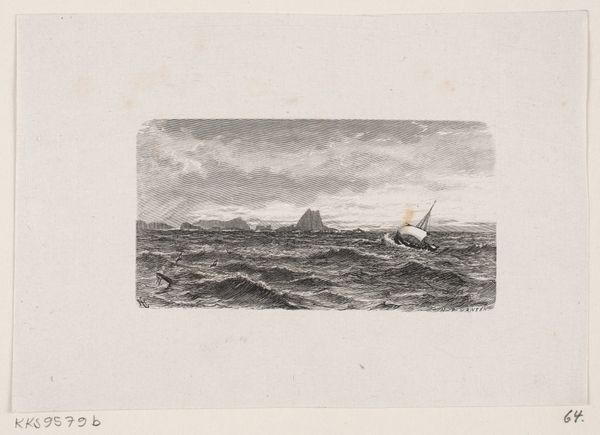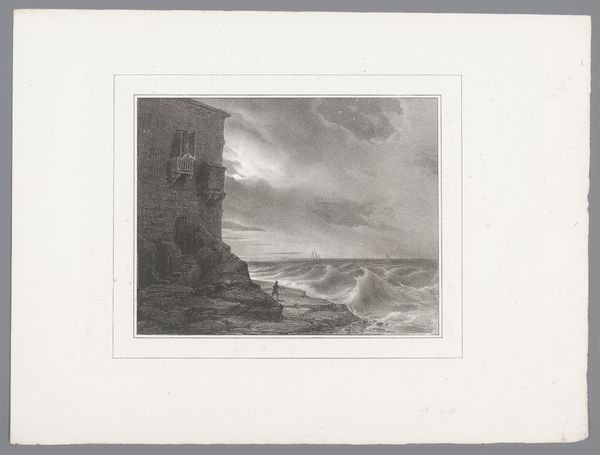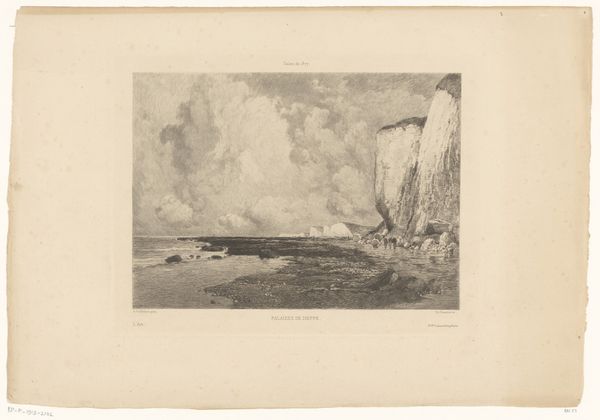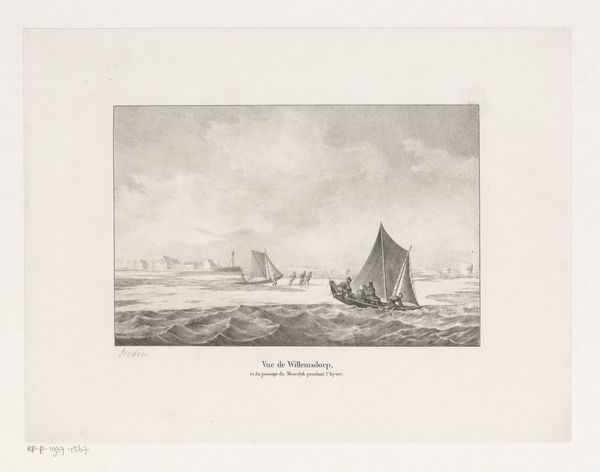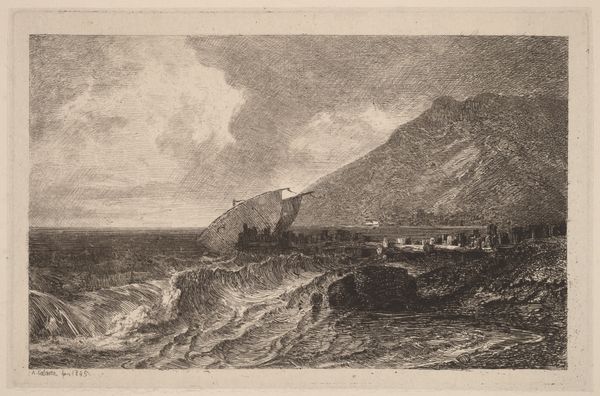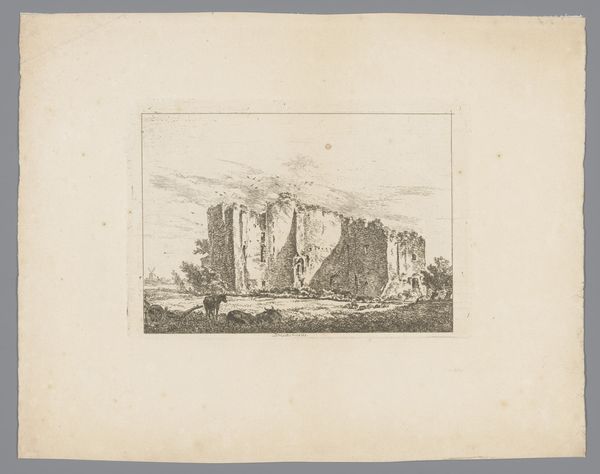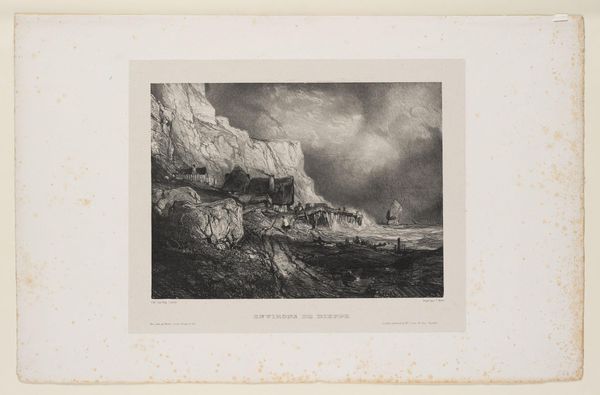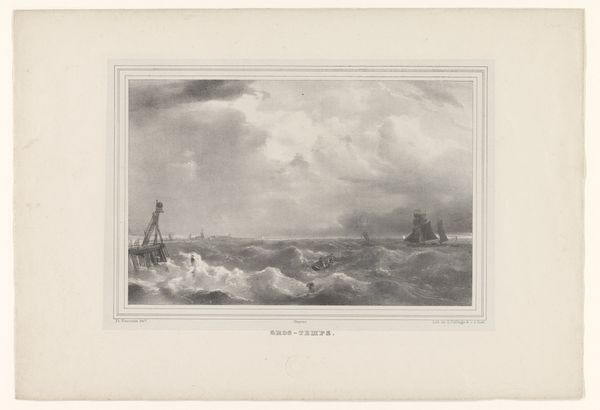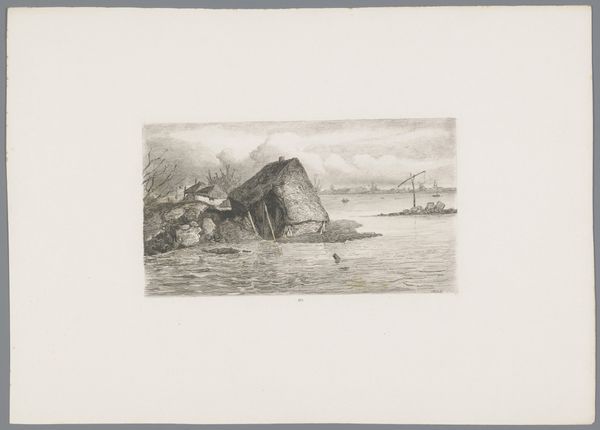
print, etching, engraving
# print
#
etching
#
landscape
#
engraving
#
realism
Dimensions: 160 mm (height) x 210 mm (width) (bladmaal)
Curator: Welcome. We are looking at Franz Wilhelm Obermann's "En klippeø," a landscape etching and engraving produced between 1830 and 1896. Editor: Immediately, I’m struck by the dynamic interplay of textures. The churning sea contrasts starkly with the solid, stratified cliffs. Curator: Obermann lived through a period of great change. This image reflects broader shifts in representations of nature during the Romantic era. As industrialization encroached, artists like Obermann sought solace and meaning in nature, imbuing landscapes with symbolic weight, for instance reflecting growing concern regarding the state's imperial grasp on land and resources. Editor: Yes, and if we look at how Obermann structures the composition, notice the use of strong horizontals in the cliff formations which lend a sense of stability while, simultaneously, the diagonals in the waves bring dynamism and tension. It's a compelling juxtaposition. Curator: Given the time period, and the realist style that he adopts here, I can't help but think about broader issues of national identity formation and cultural memory that his art engaged with. I see the island as representative of something enduring. Think of it as resisting external forces, which could also be a commentary on rising authoritarian regimes and class disparities in the late 19th century. Editor: An interesting point. I would add that, through his precise detailing, particularly in the rendering of light on the water and rocks, he reveals not only his skill, but an appreciation for the intrinsic aesthetic qualities of these forms. The light transforms into visual texture, and the tonal range that results becomes quite extraordinary. Curator: Exactly. His focus directs our attention to the aesthetic while offering insight into political discourse of the time. The piece, through its title, speaks directly to the essence of landscape and environmental identity. It encapsulates the dual nature of humanity's relationship with landscape, in which power dynamics come to light and become available for review. Editor: In all, I read the scene now with this sociopolitical dynamic, but still perceive an extraordinary synthesis of form and meaning. Thank you. Curator: Indeed, the visual language of this work connects strongly to pressing cultural topics of that time. Thanks.
Comments
No comments
Be the first to comment and join the conversation on the ultimate creative platform.
